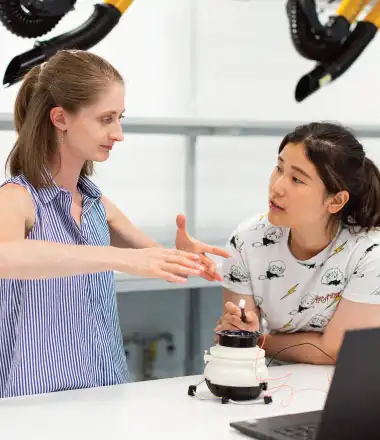An Intro: Ambitious Inventors Turning Ideas into Patents

Table of Contents
Inventing a never thought of innovation is not an easy feat. But if done right, this innovation has the ability to incite your idea into an exciting world of new opportunities. Working in IP, we are fortunate enough to collaborate with remarkable individuals who decide to commercialise and patent their unique idea. The next big thing. Through these interactions, our patent experts have compiled this guide for inventors and creators who are ready to turn their idea into a patented reality.
As an Inventor looking to patent an idea into consumable products, you must proceed with a credible strategy to ensure that your idea is indeed worthy of further development and investment. Be it in the form of time or money. Below are a few points worth noting:
1. Patent Documentation: Establishing Your Rights
As an Inventor, you must be able to move past your concept and learn to explain it with adequate specificities that are of sufficient length and detail. This validates your concept to your local patenting authority that your ideated innovation is non-fictitious and is not just an outcome of someone’s vast imagination.
The thorough documentation of your invention’s progression will not only be the stepping stone towards being granted a patent but is also a form of authenticating your claims that this innovation truly belongs to you.
2. Patent Searches: Is your idea one of a kind?
After securing your inventions' fundamental documentation, it is highly advisable that you carry out a preliminary patent search to ensure that your conceptualised invention has not been patented by someone else.
On the occasion that your concept has been secured by another inventor, chances of securing your own patent would be slim to none. As disheartening as that sounds, carrying out this step will aid in avoiding substantial loss of funds by unknowingly applying for a patent that already exists. It varies from the jurisdiction, but patent applications are generally known to be costly.
Expert Insight: Besides inventions, patent law also protects an innovations' shape, illustrative assets, and functional design. These are known as 'design patents'. Apart from carrying out a general patent search, it is advisable that you invest some time in searching for the existence of 'visually similar' inventions.
Even if no patent has been filed yet, any artwork or design illustrations that remotely resembles yours may result in the eminent rejection of your patent application.
3. Does your invention solve a problem your consumers have?
Prior to pursuing a patent for your invention, conducting a thorough market study will deem as very helpful. Well-planned market research will help you determine where your potential buyers are and if your innovation will add any sort of value to their lives, as you identify the type of problems they face and how your innovation claims to solve these said problems.
Moreover, you will be able to gain further insight into what your potential consumers are willing to spend their money on. Key demographics to focus on: spending habits, location, and age groups. If gathered effectively, this data will further propel your marketing efforts by strategically positioning your brand in the buyer market.
Expert Insight: An inexpensive and effective way to conduct your market research is through dispatching surveys targeted at your key consumer groups, based on your pre-determined buyer personas and customer demographics.
4. Your Prototype: Proving that your invention is functional
Developing an operational model of your invention is probably the best thing to do at this stage. Filing a patent with the absence of a flawless and fully-functional prototype would be a bad idea. Why? Because even if you do end up securing a patent, you will not be able to make any modifications or changes that highlight any developments to your original patented technology.
When finalising your prototype, here are some key elements to consider when working on your innovation's tangible development:
- Illustrative Product Sketch: A technical sketch of your prototype will take your patent application to another level, as it additionally portrays physical information about the look and feel of your invention.
- Prototype Mockup: Creating a 3-dimensional mockup of your invention will serve as further evidence to back up your patents’ literary documentation and scientific claims.
- Final Prototype: The final step of developing a prototype is to be able to personally sign off your own model as 'perfect'.
5. You are now ready to file for a patent
Once you have all your supporting material in order, you must then determine whether your patent needs to be filed as either a design patent or a utility patent. Design patents refer to inventions that serve an ornamental/superficial purpose while utility patents apply to innovations that can be used in a functional manner.
Expert Insight: At this point, you should have a clear idea of what kind of revenue your invention has the capability of generating. While it may seem simple to single-handedly determine what kind of patent your invention needs to be filed under, it is always best to seek out the counsel of a patent expert at this stage. Especially if your invention is of a highly technical nature; has deemed to be financially lucrative and will be subject to probable infringement, once it has been introduced to the public.


6. Key Pointers: Determining your invention's market position
At this point, you've probably done your homework, developed a faultless prototype, got your documentation in order, and applied for your patent. So what's next? We would believe that the time has come to integrate basic yet effective marketing fundamentals to help you best position your invention in the consumer market.
There truly is no 'one size fits all' approach to most pillars of intellectual property. Especially when the subject in question is a brand new concept and is yet to be introduced to the public. Asking yourself the below questions to kickstart your business plan would be a good place to start:
- What exactly does my invention aim to accomplish?
- Who are my potential end-users and how can I reach them?
- What promise is my invention making to the world? What problem is it vowing to solve or tackle?
- How do I plan on achieving these deliverables, once I have clearly defined them?
Expert Insight: Taking the time to answer these questions with careful analysis will help define your manufacturing and distribution strategy.
On a final note
For further insights on patentability, we suggest you check our article on To Patent or Not To Patent.
Pursuing a patent is challenging and while a DIY approach would not be ideal, it is still doable. If you have any questions about the how-tos and what-nots on the global patenting system, feel free to drop us a line at [email protected].






